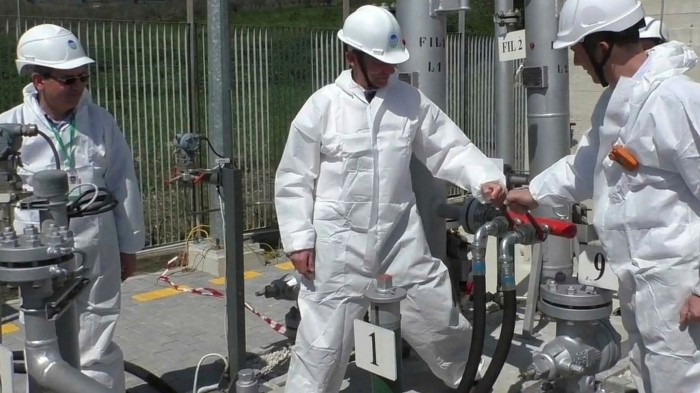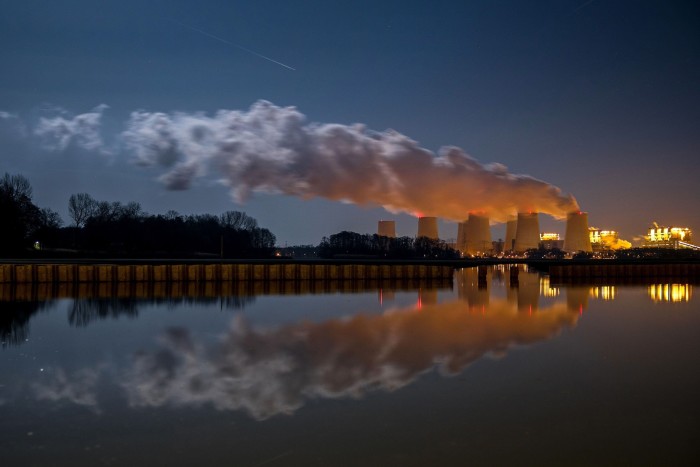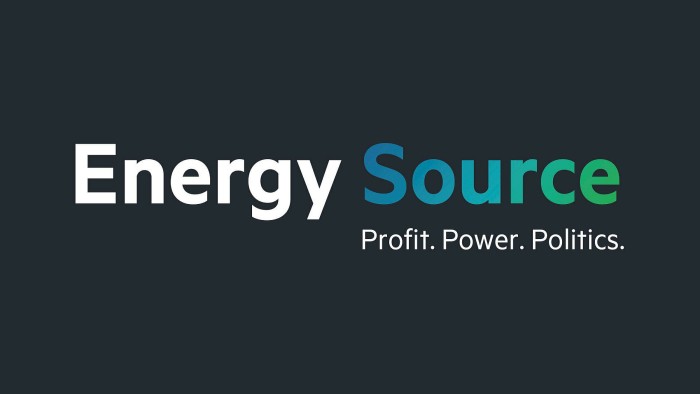Energy companies join in push to lower ‘green’ hydrogen costs

Simply sign up to the Renewable energy myFT Digest -- delivered directly to your inbox.
A consortium of energy companies has joined forces in an effort to drive the cost of so-called green hydrogen below $2 per kilogramme — the price at which they estimate the eco-friendly gas will become an attractive alternative to fossil fuels.
The group, which includes Denmark’s Orsted, Italy’s Snam, Spain’s Iberdrola, the Saudi-based ACWA Power, the Australian CWP Renewables, China’s Envision and the Norwegian chemical’s company Yara, is aiming to lower prices by boosting their combined output of green hydrogen to 25 gigawatts by 2026, a 50-fold increase over present minimal levels.
Green hydrogen, which is produced through the electrolysis of water using renewable power, is a significant part of the EU and UK plans to achieve the reductions in emissions set out in the Paris climate accord.
It has also been tagged as a key factor in curbing emissions from companies in so-called “hard-to-abate” sectors such as shipping, where there are presently few viable alternatives to fossil fuels.
“When you feed that magic number of $2 per kilo into the economic models, then [green hydrogen] starts displacing diesel,” said Marco Alverà, chief executive of Snam, the Italian energy infrastructure company.
As it stands, green hydrogen typically costs anywhere between $3.50 and $8 per kilogramme. An analysis from Bloomberg New Energy Finance earlier this year forecast the price would fall below $2 per kilogramme by 2030, but the energy companies “coalition” would seek to shave four years from that timeline.
“Phase one of the tipping point is to start competing with diesel for all the transport sector — which costs a bit more than crude oil,” said Mr Alverà. For green hydrogen to compete with natural gas and coal, it will need to fall even further to $1 per kilogramme.
Sceptics argue that both major fossil fuel consumers and energy companies are keen to promote hydrogen because it allows continued use of existing infrastructure, and express doubts that it will be any more than a “niche” energy solution.
Various countries have already set targets that encourage the development of green hydrogen. The EU in July said it wanted to install at least 40GW of green hydrogen capacity by 2030, and the UK has pledged to support the development of 5GW of low carbon hydrogen production and to develop the first town heated entirely by hydrogen by the end of the decade.
Nigel Topping, appointed by the UK government as the high level champion for global climate action ahead of the UN climate summit next year, said the coalition was a demonstration of a commitment to build the infrastructure needed.
“In the next year, I think we’re going to go from seeing [memorandums of understanding] in place to seeing actual offtake contracts,” he said. “Seeing the supply side commitment to scale and cost makes ambition less risky.”
Climate Capital

Where climate change meets business, markets and politics. Explore the FT’s coverage here
Snam is betting on hydrogen in an effort to curb its own emissions. It committed last month to a plan to invest €7bn over the next four years. Orsted, a leader in offshore wind power, also recently announced a new green hydrogen project in conjunction with BP.
Mr Alverà sees the collaboration among the energy companies as a sort of “Airbus for hydrogen”, referring to the European alliance to create a world-class aircraft manufacturer, with hopes that scaling production would not only make hydrogen more affordable as a fuel but might also preserve some manufacturing in Europe.
The companies have committed to share expertise and work together to develop technology and large manufacturing capabilities.
“We have to avoid doing what we did with solar and wind subsidies in Europe, where a few countries paid all the subsidies and then all the manufacturing went offshore,” he said.
* This article has been amended since initial publication to correct a description of hydrogen as an inert gas
Twice weekly newsletter

Energy is the world’s indispensable business and Energy Source is its newsletter. Every Tuesday and Thursday, direct to your inbox, Energy Source brings you essential news, forward-thinking analysis and insider intelligence. Sign up here.
Comments